UN Secretariat under New Leadership
The United Nations, an intergovernmental organization that promotes international cooperation, has six major organs. One of them is the United Nations Secretariat which is the organization’s executive arm headed by the secretary-general. The outgoing secretary-general of the U.N. is South Korea’s Ban Ki-moon whose term started in 2007 and will end in December 2016.
Contrary to the traditional selection process which is often criticized, the selection of the new secretary-general was publicized for the first time to make it more transparent. Debates between candidates were televised globally. The secretary-general is appointed by the General Assembly upon the endorsement of the Security Council, also known as the P5, Big Five, or Permanent Five, comprised by China, France, Russia, the United Kingdom, and the United States.
Since there has never been a female secretary general, many people think that it is high time for the next officeholder to be a woman. Several worthy female contenders have been considered for the job. In fact, 50 percent of the candidates were women. However, the appointed successor is another man—the former Portugal Prime Minister, António Guterres. His term will start on January 1, 2017. As the secretary-general, António Guterres will be the de facto spokesperson and leader of the United Nations.
António Guterres served the United Nations High Commissioner (UNHCR) for Refugees for 10 years. His experiences in this branch of the U.N. will come in handy because his term will be facing global issues such as numerous wars, refugee crises, and terrorism. In addition, he will take over the U.N. which is currently facing financial scandals and reports of sexual abuses by some U.N. peacekeeping troops overseas.
Many experts believe that António Guterres is the best man for the job considering his broad political knowledge and experience. He is known for pushing superpowers to do more for the world’s refugees and for being forthright about human rights. He is expected to be able to give the U.N. the push that it needs.
According to António Guterres, in order for the U.N. to be a more effective organization, its priority should be peace where crisis prevention rather than management is crucial. He recognizes that the root causes of conflicts are complex, multiple, and interconnected. According to him, to address the interlinked roots of conflicts, an approach that embraces the three pillars of the U.N.,namely peace and security, sustainable development, and human rights, is needed.
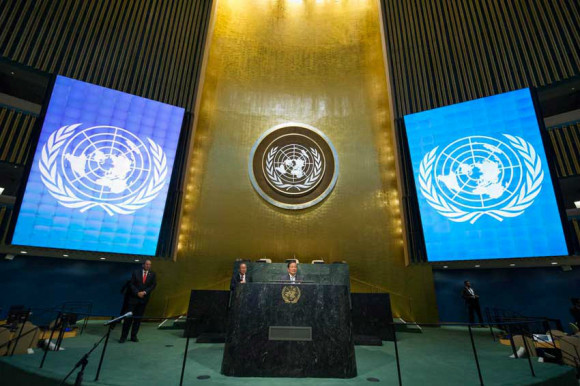
'Study > English' 카테고리의 다른 글
| Samsung BioLogics interest tepid (0) | 2016.11.10 |
|---|---|
| Wage numbers grim for part-time workers (0) | 2016.11.09 |
| Bears takes the Series 4-0, pennant and KBO in hand (0) | 2016.11.07 |
| What Defines a Successful Movie? (0) | 2016.11.04 |
| U.S.-Korean exercise targets North (0) | 2016.11.03 |
Bears takes the Series 4-0, pennant and KBO in hand
The Doosan Bears held onto the title at this year’s Korea Baseball Organization (KBO), edging out the NC Dinos 4-0 in the best-of-seven Korean Series. On a chilly day at Masan Baseball Stadium in Changwon, the Bears took down the Dinos on Wednesday to claim the fourth game of the series and defend their 2015 title.
The pennant winners claimed their first run at the bottom of second inning. With one out on the scoreboard, the Bears catcher, Yang Eui-ji, came to the plate. Yang, the MVP of the second game of the series, belted the Dinos starting pitcher Zach Stuart’s slider over the left fence for a solo homer. The second run also came off the tip of Yang’s bat. Nursing the 1-0 lead up to the sixth, Yang went up against Won Jong-hyun, who had just relieved Stuart, with runners on first and third bases, to crank an RBI double into right field. The Bears then quickly widened the gap to four runs, with third baseman Hur Kyoung-min jacking a double worth two runs batted in (RBI). Hur’s hit brought home Yang and designated hitter Nick Evans. The Bears’ run reached its pinnacle at the top of the ninth when second baseman Oh Jae-won towered a homer worth three RBIs.
Extending the lead to 8-0 by the end of the inning, the Bears essentially secured their trophy by the time they were retired from the plate. For the Dinos, who’ve been stuck in a rut, things did not improve. The team’s batting quartet of Na Sung-bum, Eric Thames, Lee Ho-joon and Park Sok-min were originally thought to be the needed weapon in the head-to-head against the Bears. The four, who together combined 115 home runs and 425 RBIs during the regular season, had gone 4-for-41 before the fourth game on Wednesday. But they remained ice cold on the plate, with Lee not even making an appearance in the game until the final inning, and his brief stint as a pinch hitter came to a quick end and eventually concluded the Series while managing to score only two runs, a rather unenviable distinction as it’s the lowest any team has scored in the history of Korean Series. Park, the third baseman and highest paid free agent in the KBO, who batted .307 during the regular season while sending 32 balls over the fence and tallying 104 RBIs, went completely hitless during the Korean Series. Thames was the only one of the four to tally any hits on Wednesday, sending out a solo dinger that gave the Dinos their only run of the day.
With this victory, not only did the Bears clinch their second straight title, they also become the first team in 21 years to sweep both the pennant and the KBO trophy.
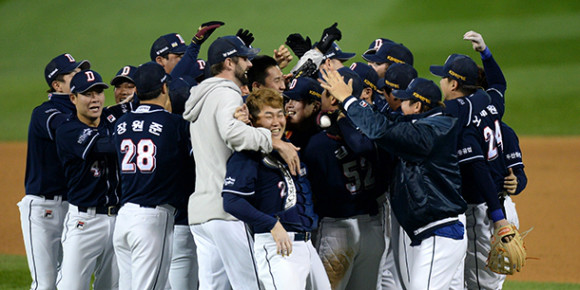
'Study > English' 카테고리의 다른 글
| Wage numbers grim for part-time workers (0) | 2016.11.09 |
|---|---|
| UN Secretariat under New Leadership (0) | 2016.11.08 |
| What Defines a Successful Movie? (0) | 2016.11.04 |
| U.S.-Korean exercise targets North (0) | 2016.11.03 |
| Samsung profit plunges (0) | 2016.11.02 |
What Defines a Successful Movie?
The entertainment industry is highly dependent on the support of the viewing public for it to continue thriving. Movie producers and other members of the movie industry always try their best to come up with film ideas, aspire to give life to their concepts, and transform them into a big hit.
Success is every filmmaker’s and film producer’s goal. However, movie producers as well as people working inside and outside the entertainment industry have different bases as to what truly defines a film’s success. Some say that a film should be critically acclaimedfor it to be considered successful. Others say the income of a movie is the best indicator of its success.
Those who judge a film’s success based on the approval and support of critics say that movie critics are reputable film buffs who hold degrees or higher levels of education in cinematography and film studies. Their thoughts about a film are based on theories and years of experiences that are the most credible bases to evaluate a film’s worth.
These people add that movies with huge earnings do not necessarily mean they are of high-caliber. Many people watch a film because of the actors and actresses it features or because the film is a movie adaptation of a famous novel.
Additionally, many high-quality, critically acclaimed, and award-winning independent films are successful. Despite what may be considered poor performances in the box office, many independent films are celebrated as achievements in filmmaking.
On the other hand, those who believe that high earnings define a film’s success say that the profit of the film reflects the support and appreciation it got from the audiences. A film is considered successful once it is called a blockbuster hit. Its gross income declaration and viewer count are more tangible indicators of success as compared to the opinions or reviews of critics.
For these people, films are made primarily for the viewing public. They are made to entertain people and are not intended to please critics. Moreover, film production is not only an art but also a numbers game. The more viewers a film manages to engage, the more successful it is.
Also, these people say that the reviews of movie critics are often subjective claims that may not necessarily agree with other people’s opinions. Purely basing a film’s success on the reviews of a few movie critics is irrational because critics do not always agree on what they find recommendable or not.
'Study > English' 카테고리의 다른 글
| UN Secretariat under New Leadership (0) | 2016.11.08 |
|---|---|
| Bears takes the Series 4-0, pennant and KBO in hand (0) | 2016.11.07 |
| U.S.-Korean exercise targets North (0) | 2016.11.03 |
| Samsung profit plunges (0) | 2016.11.02 |
| Zombie Entertainment (0) | 2016.11.01 |
U.S.-Korean exercise targets North
The South Korean and U.S. Air Forces carried out a joint exercise simulating precision strikes on North Korea’s key nuclear and missile facilities, the military revealed Thursday. The joint infiltration drill took place between Oct. 12 and 26 at the air base in Gunsan, North Jeolla, and involved the South Korean Air Force’s Combat Control Team and the U.S. 353rd Special Operations Group (SOG). “We conducted the annual ‘Teak Knife’ drill, infiltrating airborne troops behind enemy lines,” a Korean Air Force official said, “We were simulating a situation where we would infiltrate North Korea.”
The 353rd SOG, based at Kadena Airbase in Okinawa, Japan, is 800 strong and specializes in wartime and contingency plans. In the event of an emergency situation on the Korean Peninsula, this group will deploy U.S. troops for the infiltration of the North. The South Korean Special Forces’ Combat Control Team would land behind enemy lines and deploy an antiaircraft gun to remove any obstacles and obtain information about the weather and conditions. This drill, focusing on the aerial infiltration of special forces into North Korea and simulating the destruction of the regime’s key facilities, comes as Pyongyang conducted two nuclear tests and launched over 20 ballistic missiles this year alone.
While the Teak Knife exercise, designed to enhance the combat readiness of the U.S. and Korean special operations, has taken place since the 1990s, it is rare for the two countries’ militaries to make the drill and its purpose public. The official said, “The Teak Knife exercise likewise put focus on airlifting our two countries’ special forces into inland North Korea.” The two allies, following North Korea’s fifth nuclear test on Sept. 9, have been bolstering the interoperability, or fluid cooperation, of special forces with the objective of surgically striking North Korea’s key facilities.
The South Korean Air Force also took part in the Red Flag joint exercise held in Alaska from Oct. 12 to 21, during which it sent six F-15K fighter jets, a C-130 Hercules transport aircraft and 147 personnel to the Eielson Air Force Base in Alaska for a three-week drill that was presided over by U.S. Pacific Air Forces, the military here revealed Wednesday. The Red Flag advanced aerial combat training exercise dates back to 1975, and this year, the North Atlantic Treaty Organization (NATO) and New Zealand also took part in the drill. This exercise likewise simulated striking targets in enemy territory, namely North Korean nuclear and missile facilities and other key military and government buildings. South Korea has taken part in Red Flag since 2001 but for this year marked the first time its transport plane also carried U.S. troops for an infiltration operation.

'Study > English' 카테고리의 다른 글
| Bears takes the Series 4-0, pennant and KBO in hand (0) | 2016.11.07 |
|---|---|
| What Defines a Successful Movie? (0) | 2016.11.04 |
| Samsung profit plunges (0) | 2016.11.02 |
| Zombie Entertainment (0) | 2016.11.01 |
| Nukes are North Korea’s ‘ticket to survival’: Clapper (0) | 2016.10.31 |
Samsung profit plunges
Hit hard by the Galaxy Note7 debacle, Samsung Electronics Thursday reported the worst quarterly operating profit at the division responsible for smartphones ever since it started making smartphones. Operating profit for the July-September period for Samsung’s IT and Mobile Communications (IM) division was 100 billion won ($87.6 million), a 95.6 percent decrease from 2.4 trillion won in the same period a year earlier. That division’s operating profit in the previous quarter was 4.32 trillion won. The beleaguered tech giant posted revenue of 48.82 trillion won for the quarter ending Sept. 30, down 7.6 percent from a year ago, and total operating profit of 5.2 trillion won, falling 29.7 percent on year, according to the earnings report. The results correspond to a revised earnings outlook Samsung issued on Oct. 15 in a regulatory filing - four days after deciding to discontinue the troubled Galaxy Note7 phablet. A quarterly earnings guidance issued on Oct. 7 - four weeks prior to the announcement of official results, as is customary - Samsung estimated third-quarter operating profit to have grown 5.55 percent year on year to 7.8 trillion won.
“It is highly likely that operating profit will recover to the mid 7 trillion won level in the last quarter,” said Song Myung-sup, an analyst at HI Investment and Securities. Samsung was forced to recall and destroy all the estimated 4.3 million units of the Note7 produced or distributed from Aug. 19, the date of initial delivery, through Oct. 11, the day the model was discontinued. But the scrapping of the Note7 has been followed by increased sales of Galaxy S7 and S7 Edge, the preceding flagship models that were released in March, as well as mid- and low-priced models such as Galaxy A and J, said Lee Kyeong-tae, vice president of the IM division, during a conference call with investors and analysts Thursday morning. “We expect alternative models to make up for [the losses and damages from] Note7,” he said.
Semiconductors, led by high-density, high-performance mobile and server products, including the V-NAND based solid-state drive, served as a meaningful buffer for the worst-performing IM division, which includes smartphones. The semiconductor sector’s 3.37 trillion won operating profit, up 2.6 percent year-on-year, accounted for 64.8 percent of the entire operating profit of the world’s No. 1 memory-chip producer in the third quarter. During the April-June period, the IM division contributed 53 percent of the quarterly operating profit, trailed by semiconductors at 32.4 percent. “Improved demand for server and mobile memory chips has propelled prices of DRAMs and NAND profitability has been enhanced on the back of rising demand for 3-D NAND flash memory,” said Lee Se-chul, an analyst with NH Investment and Securities. He noted that the only remaining industrial sectors in Korea that China has failed to catch up with are semiconductors and organic light-emitting diodes, adding that a global undersupply of NAND flash memory chips is expected to continue for over the next three years. Lee of Samsung said the company expects difficulty until the first quarter of next year but “will achieve a business turnaround with a new flagship smartphone model,” adding the company would launch it “after thorough inspection and once its safety is guaranteed.”
The Galaxy S8, which will be shown in February at the annual Mobile World Congress in Barcelona and go on sale in March at the latest, will offer hardware focused on design and the camera, Lee said. In software, Samsung will introduce artificial intelligence for the first time in any Galaxy phone, he said. The company plans to connect not only smartphones and tablets but all services and products under the Samsung umbrella, including TVs, through an AI-backed, conversation-based interface. Samsung’s AI is likely be supported by Viv Labs, an American start-up that Samsung acquired earlier this month. Lee said the company is still figuring out how to make bendable or foldable smartphone displays.

'Study > English' 카테고리의 다른 글
| What Defines a Successful Movie? (0) | 2016.11.04 |
|---|---|
| U.S.-Korean exercise targets North (0) | 2016.11.03 |
| Zombie Entertainment (0) | 2016.11.01 |
| Nukes are North Korea’s ‘ticket to survival’: Clapper (0) | 2016.10.31 |
| Presidential Candidates Face Off (0) | 2016.10.28 |
Zombie Entertainment
Zombies are fictional reanimated human corpses. They are usually seen in horror and fantasy movies and TV shows. Zombies are commonly associated with Haitian folklore. However, the concept of zombiesis not exclusive to Haitian folklore. Different cultures have different terminologies for zombies. Earlier versions of zombies are corpses that are reanimated through magic. Contrary to this, modern zombies are usually results of exposure to radiation, diseases, and scientific disasters.
The earliest modern literatures that depicted the living dead include Mary Shelley’s “Frankenstein.” Although Frankenstein isn’t strictly a zombie story,its portrayal of how corpses are resurrected departed from folklore and magic, and leaned towards science.
The earliest films featuring zombies include the American film “White Zombie” which was released in 1932. Recent depictions of zombies are often interwoven with science-fiction as set by the 1968 film “Night of the Living Dead” by George A. Romero who is known for his horror films about imagined zombie apocalypse.
The 2000s is a period in which zombie films and TV series experienced revival through blockbuster movies. In 2013, the movie “World War Z” starring Brad Pitt was originally anticipated to fail, but enjoyed enormous critical acclaim and gross earnings. In 2016, Korea’s “Train to Busan” also gained worldwide popularity right after it was released. It became the all-time highest-grossing Korean film in Malaysia and Hong Kong.
According to Mark Brooks, writer of the book “World War Z,” people watch zombie movies and shows not only to be entertained but also to have an avenue for them to channel their worries about apocalyptic events. Moreover, the horror genre allows people to come to terms with what subconsciously terrifies them about all things supernatural. On the other hand, the zombie subgenre allows people to address their fear that the world may soon succumb to chaos brought by pandemics, climate change, and terrorist attacks.
Because zombies have become marketable, they are now considered a separate horror subgenre. Zombies are also common in comic books, art, gaming, and music. Aside from the adrenaline-pumping and entertaining element of the zombie subgenre, it plays into people’s survival instincts and interest in how the world would come to an end through the common zombie apocalyptic themes which depict the breakdown of societies resulting from an initial zombie outbreak.

'Study > English' 카테고리의 다른 글
| U.S.-Korean exercise targets North (0) | 2016.11.03 |
|---|---|
| Samsung profit plunges (0) | 2016.11.02 |
| Nukes are North Korea’s ‘ticket to survival’: Clapper (0) | 2016.10.31 |
| Presidential Candidates Face Off (0) | 2016.10.28 |
| Books hope to jump to the big screen at BIFF (0) | 2016.10.27 |
Nukes are North Korea’s ‘ticket to survival’: Clapper
James Clapper, U.S. director of national intelligence, called the goal of getting North Korea to denuclearize “a lost cause” and said the best Washington can hope for is to put a “cap” on its weapons of mass destruction program. “I think the notion of getting the North Koreans to denuclearize is probably a lost cause,” said Clapper, speaking at the Council on Foreign Relations think tank in New York on Tuesday, as he gave an assessment of what negotiations can accomplish in regard to the North’s nuclear program. “They are not going to do that. That [the nuclear program] is their ticket to survival.” “I got a good taste of that when I was there about how the world looks from their vantage,” he elaborated. “And they are under siege and they are very paranoid. So the notion of giving up their nuclear capability, whatever it is, is a nonstarter with them."
In November 2014, Clapper made a secret visit to Pyongyang carrying a letter from U.S. President Barack Obama and negotiated the release of two Americans held captive, Kenneth Bae and Matthew Miller. The former U.S. Air Force lieutenant general added, “The best we could probably hope for is some sort of a cap,” on the North’s nuclear program. But Clapper said that he doesn’t think there will be an Iran-style deal to put a cap on or suspend North Korea’s nuclear and missile programs. North Korea conducted its fourth nuclear test in January and its fifth in September and conducted over 20 ballistic missile launches this year, in violation of UN Security Council resolutions. Clapper said it is necessary to take into consideration the “worst-case assumption” in regard to North Korea’s ability to put a nuclear warhead on a missile that can reach the United States, even though there is no way to confirm that the regime’s intercontinental ballistic missiles actually work, including the KN-08. He went onto ascribe to Pyongyang “the capability to launch a missile that would have a weapon on it that potentially could reach parts of the United States, certainly including Alaska and Hawaii.”
In terms of a strategy against such nuclear and missile threats, Clapper said there is a “military option” as well as sanctions — though he pointed out, “We’re kind of running out of gas on sanctions since we’ve imposed most of them that we can. “A key player with respect to sanctions is, of course, China,” said Clapper. He added that in terms of policy toward Pyongyang, “What does bother me a bit is that we don’t capitalize on our great weapon, which is information. And that’s something they worry about a lot.” He said that the North Koreans “go nuts” over propaganda loudspeakers being activated along the demilitarized zone in the South or the dropping of leaflets by nongovernmental organization over North Korea. Clapper said, “And so that is a great vulnerability that I don’t think we have exploited.” The U.S. Department of State last month submitted a report to Congress outlining a detailed plan to flood North Korea with outside information to enhance its people’s international awareness. Clapper was appointed U.S. director of national intelligence in 2010 by Obama and oversees 16 intelligence agencies, including the Central Intelligence Agency, NSA, Federal Bureau of Investigation and National Security Agency.
But U.S. State Department spokesman John Kirby said in a briefing Tuesday that while he had not directly seen Clapper’s commends, “Nothing has changed about our policy with respect to the North and that we want to continue to see a verifiable denuclearization of the peninsula.” Kirby continued, “We want to see a return to the six-party talk process, and that means we need to see the North show a willingness and an ability to return to that process, which they haven’t done yet.”
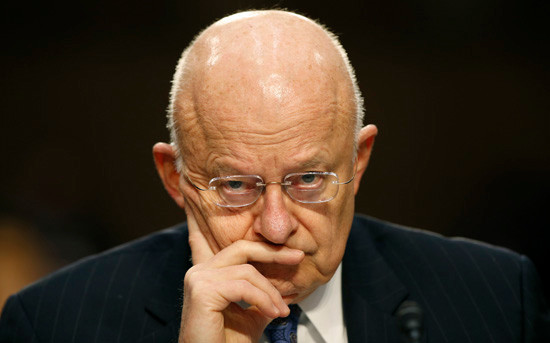
'Study > English' 카테고리의 다른 글
| Samsung profit plunges (0) | 2016.11.02 |
|---|---|
| Zombie Entertainment (0) | 2016.11.01 |
| Presidential Candidates Face Off (0) | 2016.10.28 |
| Books hope to jump to the big screen at BIFF (0) | 2016.10.27 |
| Job seekers need friends, and to chill out alone (0) | 2016.10.26 |
Presidential Candidates Face Off
Presidential debates are customary in many countries. They are necessary during presidential elections for people to make an informed decision on who they think can best run their country.During the debates, candidates get a chance to talk about their policies, priorities, positions, vision, values, and the like.
One of the most widely watched debates in the world is the U.S. presidential debates. The debates are usually held during the latter days of the election cycle, after political parties have nominated their candidates. The debates are broadcast live on television, radio, and recently, online.
The debates between Abraham Lincoln and Senator Stephen Douglas in 1858 were the predecessors of the country’s first U.S. presidential debatebetween Senator John F. Kennedy and Vice President Richard Nixon in 1960. It drew huge publicity especially for Kennedy who appeared sharp, confident, and relaxed during the debate.
On September 26, 2016, the first presidential debate between Democratic nominee Hillary Clinton and Republican nominee Donald Trump was held at Hofstra University in New York. There was much anticipation on the debate’s outcome especially since Trump is untested in the kind of format that the debate has. The debate garnered the most viewers of any presidential debate in American history with 84 million viewers, not including those who watched it online and elsewhere.
Candidates usually speak behind a podium or at conference tables while a moderator stays on the other side. Candidates do not have prior knowledge about the questions to be asked. The debates usually end with closing statements from each candidate. The formats of the debates vary. They can allow either one or more journalist moderators or members from the audience to ask questions. For example, this year’s second presidential debate had a “town meeting” format where questions came from members of the public as approved by moderators, contrary to the first debate in which questions only came from the moderator.
Television has influenced election campaigns a lot, allowing viewers to get to know the candidates in a way that radio could not. However, since television advertisements have become less convincing to voters because of advertisements’ scripted nature, debates have become helpful in allowing the largest possible audience to see the presidential aspirants in a more candid light.Televised debates reveal how well candidates can think on their feet, test how well they respond to questions and scrutiny, and determine the candidates’ knowledge of policies and timely issues that concern the country. For instance, the 2016 first U.S. presidential debate was about achieving prosperity, America’s direction, and securing

'Study > English' 카테고리의 다른 글
| Zombie Entertainment (0) | 2016.11.01 |
|---|---|
| Nukes are North Korea’s ‘ticket to survival’: Clapper (0) | 2016.10.31 |
| Books hope to jump to the big screen at BIFF (0) | 2016.10.27 |
| Job seekers need friends, and to chill out alone (0) | 2016.10.26 |
| The Opium War and China (0) | 2016.10.25 |
Books hope to jump to the big screen at BIFF
The Busan International Film Festival (BIFF) provides a window of opportunity for renowned filmmakers, cineastes and actors to screen their work and to communicate with audiences about the films. Another role of the annual festival, which kicked off on Oct. 6 and will continue until Saturday, is providing networking opportunities for content creators to meet professionals from the Asian film industry.
The Asian Film Market took place from Saturday to Tuesday this year, and boasted numerous events such as the Entertainment Intellectual Property Market (E-IP Market), where original stories can be bought and sold for adaptation across a number of media platforms. A notable event at the E-IP Market is Book to Film, where publishers introduce their books to filmmakers in the hopes of having their books adapted to screen. Held on Saturday at Bexco Hall, next to the Busan Cinema Center, 10 books were pitched to filmmakers at the event with the hope of one day being made into films. Unlike last year, when a variety of genres were introduced, five out of ten of the books presented this year fell into the thriller category. “We didn’t intend to focus on thrillers this year,” said Susan Chae, a Selection Committee member from the E-IP Market. “However, the reason is likely because a number of young authors submitted their works this year, and there were many well-crafted thrillers among those handed in.
One of the thrillers was “The Best Life,” written by Lim Sol-a and published through Munhakdongne Publishing Group. At the heart of the story are three girls - Kang-i, So-young, Aram - who leave home under the leadership of So-young. No matter how miserable their lives become, they are persistent in refusing to return home until So-young decides to return to her parents after they agree to financially support her dream of becoming a model. When Kang-i and Aram realize that So-young used them in order to make her parents pay for modeling school, they feel betrayed, and decide to end their friendship with So-young. The story is based on the author’s experience. Another story presented was the romantic “Festival Lady,” which revolves around a girl named Fedy. Written by Choi Youn-kyo and published by Holiday Apartment, the story draws on Fedy and the love she meets at Wooumdo Rock Festival, which she attends despite her hatred towards music to look for her music-loving mother who left home and to find out who her father is, who Fedy’s mother claims is a renowned rock star. Even armed with interesting plots, it is not very common for publishers to be able to ink a deal with studios. Book to Film marked its fifth anniversary this year, but the number of books that have signed development contracts is no more than 10.
According to Chae, the specific figure is difficult to confirm, as there are works that are still under negotiation, but the number of books that have signed deals since the event began add up to around seven, including this year’s “Summer, A Corpse from Nowhere,” penned by Park Yeon-sun, which inked a deal with film production company, Pollux Pictures, on the event’s opening day.
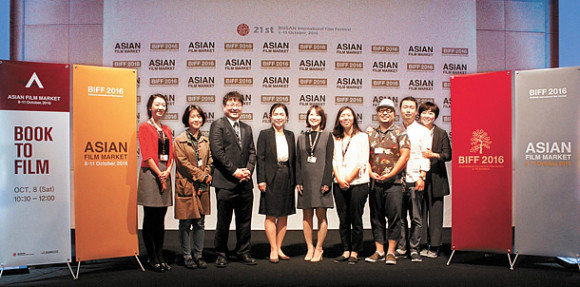
'Study > English' 카테고리의 다른 글
| Nukes are North Korea’s ‘ticket to survival’: Clapper (0) | 2016.10.31 |
|---|---|
| Presidential Candidates Face Off (0) | 2016.10.28 |
| Job seekers need friends, and to chill out alone (0) | 2016.10.26 |
| The Opium War and China (0) | 2016.10.25 |
| Government pledges to invest in engineering (0) | 2016.10.24 |
Job seekers need friends, and to chill out alone
The annual autumn job-hunting season has kicked off, and entry-level worker candidates either in college or freshly graduated show three key tendencies, according to big-data analysis by Innocean, an advertising arm of Hyundai Motor. Job seekers tend to rely on each other in preparation groups - to share information and help each other stay motivated - but prefer to be on their own when it comes to relieving stress. Due to a shortage of venues to congregate, they tend to meet and study in unconventional places such as bars and motels. The results are based on 600,000 pieces of data from blogs, portal sites, web communities and social networks in the past year, collected through the keywords “youth employment.”
As job candidates have little money and time, they ease their stress with the most economical methods, such as surfing the internet, exercising, playing with smartphones or stretching. The job market is so competitive, young people seek consolation from people in the same position. But that exposes them to a different kind of mental stress, which prompts them to hide in their dens at night. “In the afternoon, I look for information on the school’s community website or meet with my study group members, and at night, I drink alone or go the karaoke to sing to myself,” explained 26-year-old job seeker Choi Sung-sik. “I joined a study group because I needed both the peer pressure and peer motivation,” said Park Si-on, a 25-year-old college senior. “But when it comes to relieving my stress, I prefer to spend time on my own. I usually download a movie on the weekend and watch it with a bottle of beer in my room. The quiet alone-time helps calm my mind.”
As study groups become an essential part of job seeking, people are finding it harder to find a place to meet up. Almost 6,500 pieces of the 600,000 bits of social media data show that space available for job seekers to congregate is limited - partly because not all of them are still in school. The most popular venue was cafes, where it’s free to hang around without a time limit. Other venues frequented by them include bars and motels. “As the spaces for meeting and studying are scant, some private institutes or bars have devised the idea of renting space during non-operating hours to job seekers,” the report said. “Even some motels are catering to job candidates and have earned the nickname ‘study motels.’”
The challenging environment for young job seekers is undermining many people’s morale. Almost two in three people currently looking for a job are overwhelmed by their situations and wish that they could stop the search. A survey conducted on 635 job seekers by Job Korea, a major portal website for job seekers, and Albamon, a part-time job agency website, revealed that 61.7 percent of the subjects indicated they would like to give up on their hunt. Such pessimistic views were mostly due to not being able to find the right job (44.1 percent), job requirements were too high (37.5 percent) and no companies would hire them (36.0 percent).
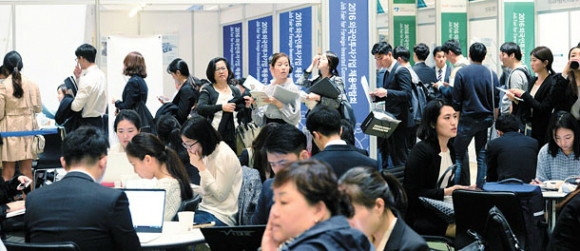
'Study > English' 카테고리의 다른 글
| Presidential Candidates Face Off (0) | 2016.10.28 |
|---|---|
| Books hope to jump to the big screen at BIFF (0) | 2016.10.27 |
| The Opium War and China (0) | 2016.10.25 |
| Government pledges to invest in engineering (0) | 2016.10.24 |
| The Ripple Effect of China’s Economic Slowdown (0) | 2016.10.21 |

